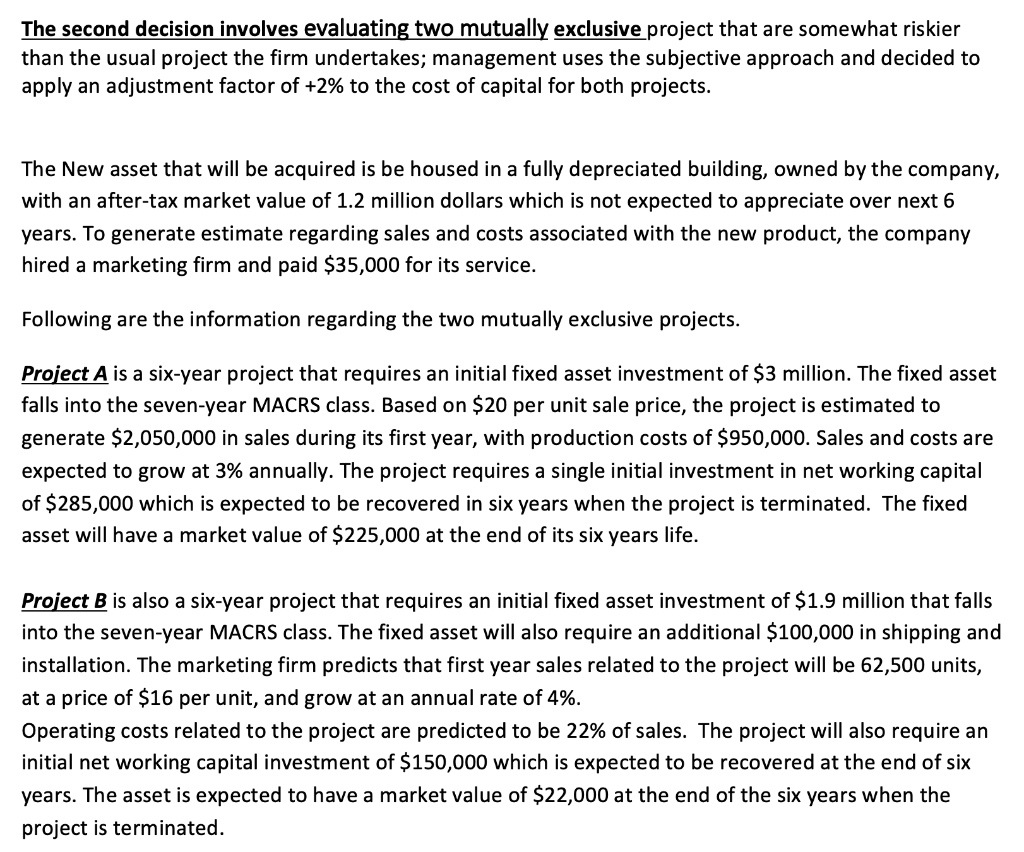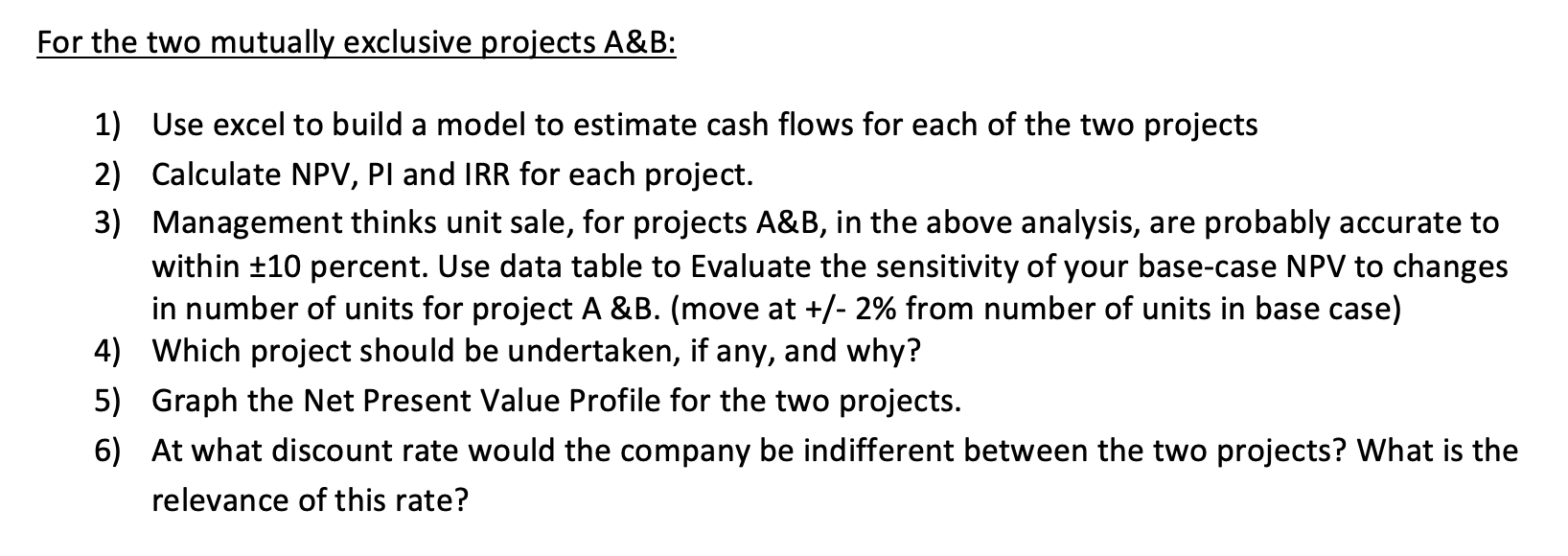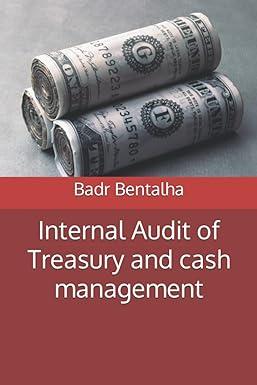

The second decision involves evaluating two mutually exclusive project that are somewhat riskier than the usual project the firm undertakes; management uses the subjective approach and decided to apply an adjustment factor of +2% to the cost of capital for both projects. The New asset that will be acquired is be housed in a fully depreciated building, owned by the company, with an after-tax market value of 1.2 million dollars which is not expected to appreciate over next 6 years. To generate estimate regarding sales and costs associated with the new product, the company hired a marketing firm and paid $35,000 for its service. Following are the information regarding the two mutually exclusive projects. Project A is a six-year project that requires an initial fixed asset investment of $3 million. The fixed asset falls into the seven-year MACRS class. Based on $20 per unit sale price, the project is estimated to generate $2,050,000 in sales during its first year, with production costs of $950,000. Sales and costs are expected to grow at 3% annually. The project requires a single initial investment in net working capital of $285,000 which is expected to be recovered in six years when the project is terminated. The fixed asset will have a market value of $225,000 at the end of its six years life. Project B is also a six-year project that requires an initial fixed asset investment of $1.9 million that falls into the seven-year MACRS class. The fixed asset will also require an additional $100,000 in shipping and installation. The marketing firm predicts that first year sales related to the project will be 62,500 units, at a price of $16 per unit, and grow at an annual rate of 4%. Operating costs related to the project are predicted to be 22% of sales. The project will also require an initial net working capital investment of $150,000 which is expected to be recovered at the end of six years. The asset is expected to have a market value of $22,000 at the end of the six years when the project is terminated. For the two mutually exclusive projects A&B: 1) Use excel to build a model to estimate cash flows for each of the two projects 2) Calculate NPV, Pl and IRR for each project. 3) Management thinks unit sale, for projects A&B, in the above analysis, are probably accurate to within +10 percent. Use data table to Evaluate the sensitivity of your base-case NPV to changes in number of units for project A &B. (move at +/- 2% from number of units in base case) 4) Which project should be undertaken, if any, and why? 5) Graph the Net Present Value Profile for the two projects. 6) At what discount rate would the company be indifferent between the two projects? What is the relevance of this rate? The second decision involves evaluating two mutually exclusive project that are somewhat riskier than the usual project the firm undertakes; management uses the subjective approach and decided to apply an adjustment factor of +2% to the cost of capital for both projects. The New asset that will be acquired is be housed in a fully depreciated building, owned by the company, with an after-tax market value of 1.2 million dollars which is not expected to appreciate over next 6 years. To generate estimate regarding sales and costs associated with the new product, the company hired a marketing firm and paid $35,000 for its service. Following are the information regarding the two mutually exclusive projects. Project A is a six-year project that requires an initial fixed asset investment of $3 million. The fixed asset falls into the seven-year MACRS class. Based on $20 per unit sale price, the project is estimated to generate $2,050,000 in sales during its first year, with production costs of $950,000. Sales and costs are expected to grow at 3% annually. The project requires a single initial investment in net working capital of $285,000 which is expected to be recovered in six years when the project is terminated. The fixed asset will have a market value of $225,000 at the end of its six years life. Project B is also a six-year project that requires an initial fixed asset investment of $1.9 million that falls into the seven-year MACRS class. The fixed asset will also require an additional $100,000 in shipping and installation. The marketing firm predicts that first year sales related to the project will be 62,500 units, at a price of $16 per unit, and grow at an annual rate of 4%. Operating costs related to the project are predicted to be 22% of sales. The project will also require an initial net working capital investment of $150,000 which is expected to be recovered at the end of six years. The asset is expected to have a market value of $22,000 at the end of the six years when the project is terminated. For the two mutually exclusive projects A&B: 1) Use excel to build a model to estimate cash flows for each of the two projects 2) Calculate NPV, Pl and IRR for each project. 3) Management thinks unit sale, for projects A&B, in the above analysis, are probably accurate to within +10 percent. Use data table to Evaluate the sensitivity of your base-case NPV to changes in number of units for project A &B. (move at +/- 2% from number of units in base case) 4) Which project should be undertaken, if any, and why? 5) Graph the Net Present Value Profile for the two projects. 6) At what discount rate would the company be indifferent between the two projects? What is the relevance of this rate








